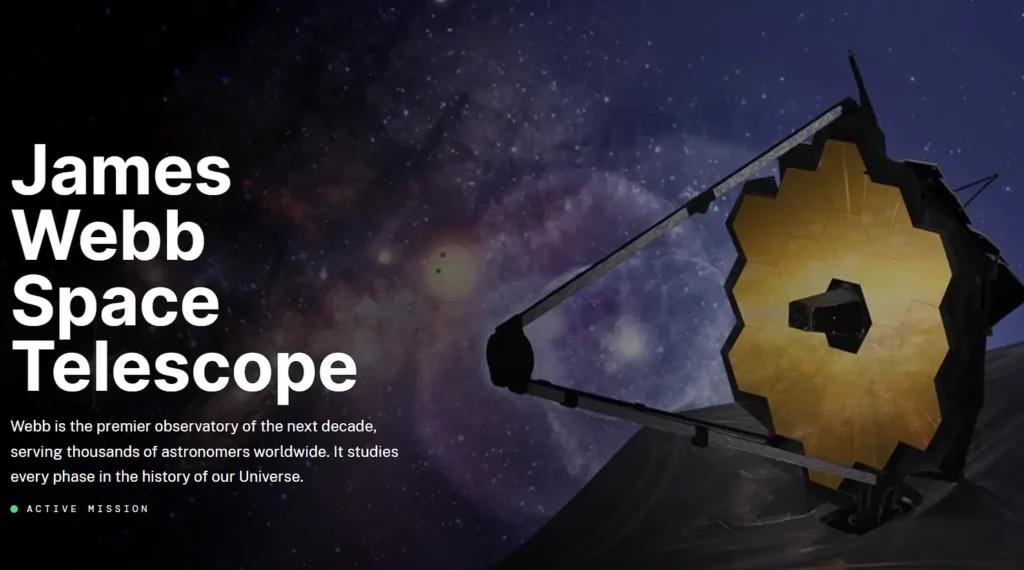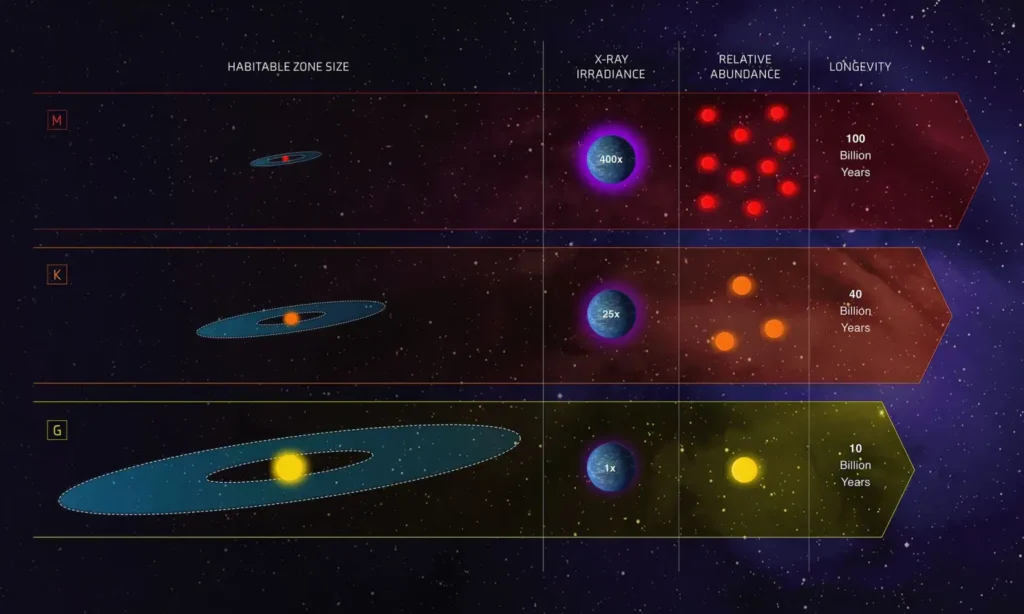
The James Webb Space Telescope (JWST) is set to transform our understanding of the universe, providing unprecedented information about the origin and evolution of the universe. Developed by NASA in collaboration with ESA (European Space Agency) and CSA (Canadian Space Agency), the JWST represents the pinnacle of astronomical engineering. Let’s learn about the history, features, objectives, and anticipated successes of this remarkable telescope.
Latest Image taken by James Webb Space Telescope.

The History and Development of the JWST.
The journey of the James Webb Space Telescope (JWST) began in the late 1990s as a successor to the Hubble Space Telescope. Initially known as the Next Generation Space Telescope (NGST), it was renamed in 2002 to honor James E. Webb, NASA’s administrator during the Apollo era. The development of the JWST faced numerous challenges, including technological hurdles, budget constraints, and delays. Despite these obstacles, the relentless efforts of scientists and engineers have brought this ambitious project to fruition.
Key Features and Capabilities of the James Webb Space Telescope (JWST).
James Webb Space Telescope (JWST) has several unprecedented features that set it apart from its predecessors:
- Primary mirror: With a diameter of 6.5 meters, JWST’s primary mirror is the largest mirror ever placed in space, allowing it to capture more light and see farther into the universe.
- Sunshield: The tennis court-sized sunshield protects the telescope from the Sun’s heat, keeping its instruments at extremely low temperatures.
- Infrared observations: Unlike Hubble, which observes primarily in the visible spectrum, James Webb Space Telescope (JWST) is optimized for infrared observations, enabling it to see through cosmic dust and uncover hidden galaxies and stellar nurseries.
How the JWST Differs from Previous Space Telescopes.
The JWST surpasses previous space telescopes like Hubble in several ways. Its larger mirror and advanced infrared capabilities allow it to observe distant celestial objects with greater clarity and detail. Additionally, the JWST’s position at the second Lagrange point (L2) provides a stable environment for continuous observations, free from Earth’s atmospheric interference.
The Scientific Objectives of the JWST
The JWST aims to address some of the most profound questions in astronomy and cosmology, including:
- Formation of Stars and Planets: By observing star-forming regions and protoplanetary disks, the JWST will shed light on the processes that lead to the birth of stars and planets.
- Galaxy Formation and Evolution: The telescope will study distant galaxies to understand how they form, evolve, and assemble into large-scale structures.
Dark Matter and - Dark Energy: Through its observations, the JWST will contribute to our understanding of dark matter and dark energy, the mysterious components that make up most of the universe.
The Launch and Deployment of the JWST.
The JWST was launched on December 25, 2021, aboard an Ariane 5 rocket from French Guiana. The intricate deployment process involved unfolding its massive sunshield and primary mirror, a feat of engineering precision. The telescope successfully reached its destination at L2, approximately 1.5 million kilometers from Earth.
Expected Discoveries and Breakthroughs with the JWST.
Astronomers anticipate that the JWST will make numerous groundbreaking discoveries, including:
- Early Universe: By observing the first galaxies formed after the Big Bang, the JWST will provide insights into the universe’s infancy.
- Exoplanets: The telescope’s advanced instruments will analyze the atmospheres of exoplanets, searching for signs of habitability and potential biosignatures.
- Cosmic Mysteries: From black holes to supernovae, the JWST will explore various cosmic phenomena, enhancing our understanding of the universe’s complexities.
The Impact of the JWST on Our Understanding of the Universe.
The JWST’s advanced capabilities will revolutionize our understanding of the cosmos. Its observations will likely lead to paradigm shifts in our knowledge of star formation, galaxy evolution, and the fundamental forces shaping the universe. The JWST’s discoveries will inspire future generations of scientists and fuel the quest for knowledge.
Challenges and Obstacles Faced During the Development of the JWST.
The development of the JWST was fraught with challenges, including budget overruns, technical difficulties, and schedule delays. Despite these setbacks, the collaborative efforts of NASA, ESA, and CSA, along with the dedication of countless scientists and engineers, ensured the project’s success.
Conclusion: The Future of Space Exploration with the JWST

The James Webb Space Telescope (JWST) heralds a new era in space exploration, offering unprecedented opportunities to uncover the mysteries of the universe. Its cutting-edge technology and ambitious scientific goals will drive astronomical research for decades to come, paving the way for future space missions and discoveries.
Recommended Posts:
Frequently Asked Questions:
The James Webb Space Telescope (JWST) is a revolutionary space observatory developed through an international collaboration between NASA, the European Space Agency (ESA), and the Canadian Space Agency (CSA). Launched on December 25, 2021, the JWST is designed to be the premier observatory of the next decade, serving thousands of astronomers worldwide. Unlike its predecessor, the Hubble Space Telescope, the JWST observes primarily in the infrared spectrum, allowing it to see objects and regions of space that are often obscured by dust and gas.
While both the Hubble Space Telescope and the JWST are designed to observe the universe and provide groundbreaking astronomical data, they have several key differences:
- Observation Spectrum: Hubble primarily observes in the visible and ultraviolet regions of the spectrum, while the JWST focuses on infrared observations. This allows the JWST to peer through cosmic dust and study objects that are cooler and fainter, which Hubble cannot detect.
- Mirror Size: The JWST’s primary mirror is 6.5 meters in diameter, compared to Hubble’s 2.4-meter mirror. This larger mirror enables the JWST to collect more light and see further into the past.
- Location: Hubble orbits Earth at an altitude of about 547 kilometers. In contrast, the JWST is positioned at the second Lagrange point (L2), about 1.5 million kilometers from Earth, providing a stable environment for observations free from Earth’s shadow and atmospheric interference.
- Technology: The JWST includes advanced technologies such as a multi-layered sunshield to keep its instruments at extremely low temperatures, crucial for infrared observations.
The JWST has several ambitious scientific goals aimed at advancing our understanding of the universe:
- Formation of Stars and Planets: By observing star-forming regions and protoplanetary disks, the JWST will provide insights into the processes that lead to the birth of stars and the formation of planetary systems.
- Galaxy Formation and Evolution: The telescope will study distant galaxies to uncover how they form, evolve, and assemble into large-scale cosmic structures over billions of years.
- Exoplanet Atmospheres: The JWST will analyze the atmospheres of exoplanets, searching for chemical signatures that might indicate the presence of life or habitable conditions.
Dark Matter and - Dark Energy: Through its observations of distant galaxies and large-scale structures, the JWST will help astronomers better understand the nature of dark matter and dark energy, which together constitute most of the universe’s mass-energy content.
Early Universe: By observing the first galaxies and stars that formed after the Big Bang, the JWST will provide a clearer picture of the universe’s early stages and its subsequent evolution.
The development of the JWST was a monumental task that faced numerous challenges:
- Technological Hurdles: Developing the advanced technologies required for the JWST, such as its large deployable mirror and sunshield, posed significant engineering challenges.
- Budget Overruns: The project’s cost exceeded initial estimates, requiring additional funding and causing delays. The total cost eventually reached approximately $10 billion.
- Schedule Delays: Initial plans aimed for a launch in the early 2000s, but technical difficulties, redesigns, and the need for extensive testing pushed the launch date to 2021.
- Deployment Complexity: The JWST’s complex deployment sequence, involving the unfolding of its sunshield and mirror , required meticulous planning and execution to ensure success in space.
Astronomers and scientists anticipate that the JWST will make a multitude of groundbreaking discoveries:
- Early Universe: The JWST will observe the first galaxies and stars that formed after the Big Bang, providing insights into the conditions and processes that shaped the early universe.
- Exoplanets: By analyzing the atmospheres of exoplanets, the JWST will search for signs of habitability and potential biosignatures, expanding our understanding of the potential for life beyond Earth.
- Stellar and Planetary Formation: The telescope will study the birth and evolution of stars and planetary systems, offering detailed views of protoplanetary disks and star-forming regions.
Black Holes and Cosmic - Phenomena: The JWST will explore various cosmic phenomena, including black holes, supernovae, and other extreme environments, contributing to our knowledge of these mysterious and powerful objects.
- Dark Matter and Dark Energy: Observations of distant galaxies and large-scale cosmic structures will help refine our understanding of dark matter and dark energy, shedding light on their roles in the universe’s expansion and evolution.
